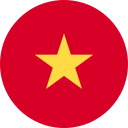Sách English File - Trung cấp - Bài học 6B
Ở đây bạn sẽ tìm thấy từ vựng từ Bài 6B trong sách giáo trình English File Intermediate, chẳng hạn như "hói", "vỗ tay", "huýt sáo", v.v.
Xem lại
Thẻ ghi nhớ
Chính tả
Đố vui

(of a person) having a height that is greater than what is thought to be the average height

cao,cao lớn, having more height than others
(of a person) having a height that is less than what is thought to be the average height

thấp, lùn
(of people or animals) weighing less than what is thought to be healthy for their body

gầy,mảnh khảnh, having little body weight
weighing more than what is considered healthy or desirable for one's body size and build

thừa cân, quá béo
thin in an attractive way

mảnh mai, thon thả
in or along a direct line, without bending or deviation

thẳng, trực tiếp
(of hair) having a spiral-like pattern

xoăn, quăn
having little or no hair on the head

hói, trọc
the hair that grow on the chin and sides of a man’s face

râu, lông mặt
one of the two body parts that is connected to the shoulder and ends with fingers

cánh tay
the part of our body between our neck and our legs that we cannot see

lưng, cột sống
the lowest part of our face that is below our mouth

cằm, phần dưới của khuôn mặt
each of the two body parts that we use for hearing

tai
a body part on our face that we use for seeing

mắt, đôi mắt
the front part of our head, where our eyes, lips, and nose are located

mặt, khuôn mặt
the body part that is at the end of our leg and we stand and walk on

bàn chân, chân
each of the long thin parts that are connected to our hands, sometimes the thumb is not included

ngón tay, những ngón tay
the part of our body that is at the end of our arm and we use to grab, move, or feel things

tay, bàn tay
the top part of body, where brain and face are located

đầu, não
the body part that is in the middle of the leg and helps it bend

đầu gối
each of the two long body parts that we use when we walk

chân
each of the two soft body parts that surround our mouth

môi
our body part that we use for eating, speaking, and breathing

miệng
the body part that is connecting the head to the shoulders

cổ
the body part that is in the middle of our face and we use to smell and breathe

mũi, lỗ mũi
each of the two parts of the body between the top of the arms and the neck

vai
the body part inside our body where the food that we eat goes

dạ dày, bụng
one of the things in our mouth that are hard and white and we use to chew and bite food with

răng
the thick finger that has a different position than the other four

ngón tay cái, ngón tay dày nhất và có vị trí khác so với bốn ngón còn lại
each of the five parts sticking out from the foot

ngón chân, ngón
the soft movable part inside the mouth used for tasting something or speaking

lưỡi, cơ quan vị giác
to cut into flesh, food, etc. using the teeth

cắn, nhai
to strike the palms of one's hands together forcefully, usually to show appreciation or to attract attention

vỗ tay, đập tay
to hit a thing or person with the foot

đá, giậm chân
to move one's head up and down as a sign of agreement, understanding, or greeting

gật đầu, gật đầu đồng ý
to show the place or direction of someone or something by holding out a finger or an object

chỉ, hướng dẫn
to recognize or become aware of a particular scent

ngửi, cảm nhận mùi
to make our mouth curve upwards, often in a way that our teeth can be seen, to show that we are happy or amused

cười
to look at someone or something without moving the eyes or blinking, usually for a while, and often without showing any expression

nhìn chằm chằm, nhìn không chớp mắt
to have a specific flavor

nếm, có vị
to put our hand or body part on a thing or person

chạm, sờ
to make a high-pitched sound by forcing air out through one's partly closed lips

huýt sáo
| Sách English File - Trung cấp |
|---|